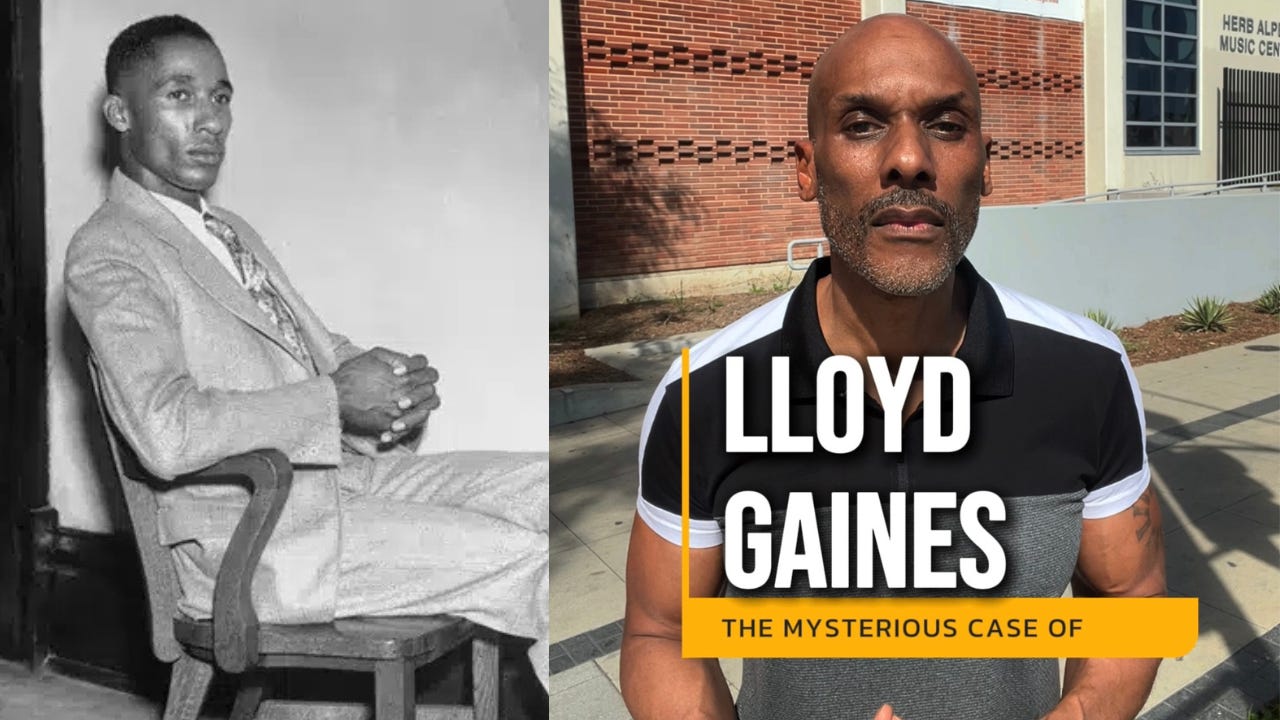The Mysterious Case of Lloyd Gaines: DEI, Law School, and the Myth of Meritocracy
After winning a landmark Supreme Court case against racism, Lloyd Gaines suddenly disappeared
On this day in history, March 19, 1939, a young Black man named Lloyd Gaines, mysteriously disappeared in Chicago. He was presumed to be abducted and murdered simply because he wanted to go to law school.
The case of Missouri ex rel. Gaines is now studied in law schools all across America, but this is not only a story about a missing Black man and a famous court case. It’s a story about the white myth of meritocracy, the purpose of DEI, and the history of racial segregation in America.
Then as now, maintaining the delusion of white supremacy required the exclusion of Black excellence.
Gaines spent part of his youth in St. Louis, Missouri, as I did, graduated at the top of his class at Vashon High School, and became an honors student at Lincoln University, a racially segregated college for Black students in Missouri.
But when he applied to the University of Missouri Law School, he was rejected simply because he was Black. He sued all the way to the U.S. Supreme Court and won in a famous case that became a precursor to the Brown v. Board of Education decision.
In December 1938, the Supreme Court, following the “separate but equal” logic of the infamous 1896 Plessy v. Ferguson case, ruled that the state of Missouri, had to allow Gaines to attend the University of Missouri Law School since there was no law school for Black students. After all, you couldn’t be “separate but equal” if there was no separate school to attend?
I first heard of this case when I was a law student in the 1990s. The Supreme Court decision was excerpted in a dry constitutional law casebook that provided no details of who Lloyd Gaines was as a person. I had no idea he was from my hometown of St. Louis and no idea he had disappeared after he won his case. As lawyers, we were trained to focus only on what we were told were the relevant facts.
Gaines was a qualified student for admission to the law school, but the state of Missouri offered to send him to a law school in another state rather than allow him to learn with white students in his own state. Then as now, maintaining the delusion of white supremacy required the exclusion of Black excellence.
After Gaines won his Supreme Court case in December 1938, rather than simply admit Gaines to the University of Missouri Law School, the state spent $275,000 to convert an old cosmetology school into a makeshift law school just for Gaines and a handful of Black students for the fall of 1939.
Gaines never made it to the first day of school.
The NAACP sued to challenge Missouri for hastily building a second-rate alternative school, and Gaines became a hero to Black people in St. Louis, but even with his college degree and his newfound fame, he could not get a job to support himself in the racist city of St. Louis, so he worked as a low-wage gas station attendant, moved to Kansas City, and then to Chicago.
It was there in Chicago, on a cool, rainy night in March 1939, when Gaines stepped out the door to get some stamps, and he was never seen again.
Family members asked the FBI to investigate in 1940, but FBI Director J. Edgar Hoover refused. Thirty years later in 1970, another request was made, but Hoover again declined. Even today, in 2025, the body of civil rights hero Lloyd Gaines has never been found.
At a time when white leaders in Washington are erasing Black history and turning back the clock on racial progress, we remember the price of racism in America.



